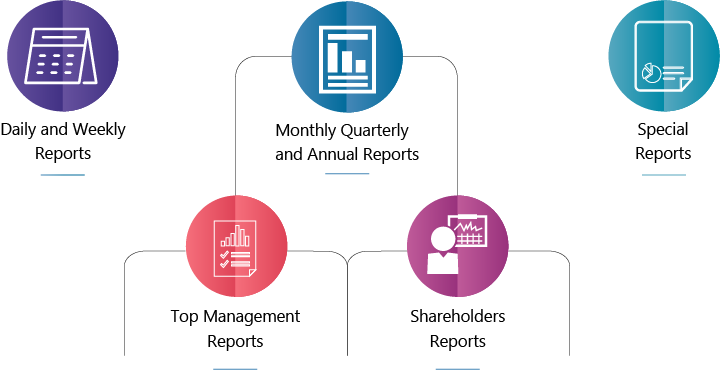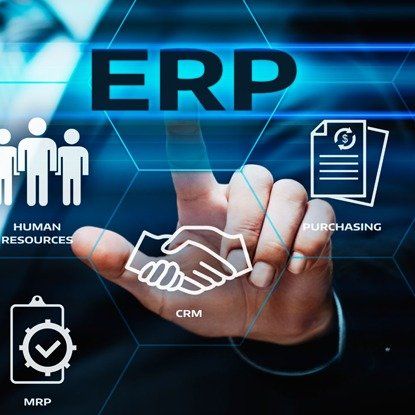SERVICES

2-1 Pricing Systems
• Make informed pricing decisions.
4-1 Actual Costing Systems
1- Establishing systems for strategic cost management and pricing, which include the following:
1.1 Standard Costing Systems
• Providing an accurate view of service costs.
• Calculating the standard consumption rate for each product (raw materials – time)
• Determining cost allocation policies and loading rates.
• Use the latest costing systems, such as T.D.A.B.C.
• Apply the latest target costing systems
3-1 Cost Control Systems
• Monitor cost elements at each operational/production stage
5-1 Sensitivity and Variance Analysis
• Evaluate variances at the cost center level.
• Make corrective decisions to achieve a competitive advantage.

1- Establishing systems for strategic cost management and pricing, which include the following:
1.1 Standard Costing Systems
• Providing an accurate view of service costs.
• Calculating the standard consumption rate for each product (raw materials – time)
• Determining cost allocation policies and loading rates.
• Use the latest costing systems, such as T.D.A.B.C.
• Apply the latest target costing systems
2-1 Pricing Systems
• Make informed pricing decisions.
3-1 Cost Control Systems
• Monitor cost elements at each operational/production stage
4-1 Actual Costing Systems
5-1 Sensitivity and Variance Analysis
• Evaluate variances at the cost center level.
• Make corrective decisions to achieve a competitive advantage.


2- Purchasing and Inventory Systems and Control Systems for Each:
1-2 Purchasing and Inventory Systems
• Document cycle (paper and electronic).
• Preparing an implementation manual.
• Preparing a supplier receipts manual in both Arabic and English.
2-2 Purchasing and Warehouse Control Systems
• Documentation cycle (paper and electronic).
• Preparing an implementation manual.
• Preparing a model for analyzing deviations from planned systems (quantity and value).
3-2 Internal Reporting Systems
• Preparing periodic monitoring and feedback reports to promote continuous improvement.


3- Establishing periodic and special reporting systems
1-3 Periodic Reporting Systems
a. Reports by Management Level:
• Reports to shareholders and senior management.
• Reports to executive management and other departments.
• Reports to departments and operational and production supervisors.
b. Reports by Periodicity:
• Monthly and quarterly reports.
• Weekly and monthly reports.
• Daily and weekly reports.
2-3 Special Reporting Systems
• Preparing reports to support strategic decision-making and measure their impact on profitability at the departmental, service, and product levels, as well as at the company level as a whole.
• Example: Crisis management reports and impact assessment.
Implementation steps:
• Designing templates: Measuring report quality through its support for decisions, while balancing detail, timeliness of presentation, and accuracy of content.
• Pilot implementation.
• Final implementation.
• Preparing a policy and procedure manual detailing responsibilities and confidentiality of presentation.
![pyr_chart [Recovered]-03](https://growxcel.com/wp-content/uploads/2025/05/pyr_chart-Recovered-03.png)

4- Supporting financial management for management accounting purposes
- Example:
• Chart of accounts: Alignment with the cost center tree.
• Accounting guidelines: Alignment with strategic cost analysis purposes.
• Systems for implementing accounting and auditing, their periodicity, and schedule.
• Internal reporting systems: Policies, procedures, and degree of detail.
• Improving output efficiency: Supporting the accuracy of information to align with target systems.
5- Preparing operating budgets
-
What is the importance of the operating budget?
-
The operating budget is a company-wide roadmap, providing a clear vision of targeted profits during the planned period, both at the level of general business results and through detailed methods for achieving these goals. These dimensions include:
-
At the level of departments and divisions.
-
At the item level (products or services).
-
Weekly, monthly, quarterly, or semi-annually.
-
-
-
The budget provides a clear vision of the anticipated steps before implementation begins. It requires studying the expected impact on the targeted profitability and identifying the necessary steps in detail. It also includes a plan that illustrates the expected impact to ensure optimal utilization of available resources.
-
Components of the Operating Budget
• The operating budget includes:
o Optimal selection of the sales mix.
o Determining target profits at the item, department, and company levels.
o Making feedback decisions to ensure optimal utilization of expenditures.
o Reducing waste levels while determining the optimal time for decision-making and implementation.
-

1-Supporting the implementation of global ERP systems (e.g., SAP or Oracle “Implementation Support”)
- Whether by:
1-Developing an existing ERP system
2-Building and implementing a new ERP system
3-Creating a dedicated cost unit (Access or Excel)